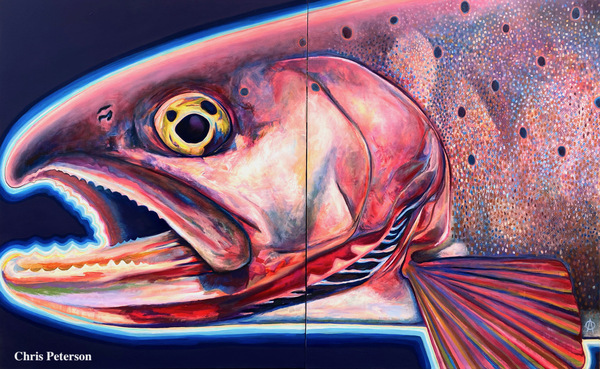Dublin Core
Title
Description
All of us – people, fish, and many other creatures – depend on Utah’s rivers. Utahns rely on a system of dams and diversions to give us water, but the choices we make about how to develop water resources have big impacts on river habitats.
Fish, for example, need a lot more than water to thrive. Oxygen, temperature, food, and places to hide matter to fish. The shape and depth of a river channel, seasonal water levels, and aquatic plants all influence their survival. Dams and culverts change river habitats, causing water to pool and move slowly, which affects light, temperature, and plant life. When Cutler Reservoir Dam was built on the Bear River in 1927, it created a warm, shallow marsh that was just right for newly-introduced sport-fish, but too hot for the native cold-water fish that used to live there.
Many fish native to Utah’s rivers migrate seasonally to spawn, rear young, and find food. Barriers like dams create short, disconnected rivers that block access to resources for fish and isolate fish populations. The East Canyon Dam built in 1964 provides a good example of how dams “fragment” fish habitat. The dam prevents the population of Bonneville cutthroat trout that live in the fast-moving, cold-water stream below the dam from migrating and connecting with other trout populations. This makes the population below the dam more vulnerable. Even if they could somehow get over the dam, the warm reservoir is another barrier.
Deciding how to use water from Utah’s rivers is complicated and involves tradeoffs. Building dams has high environmental and economic costs, and removing large dams is daunting. But rethinking smaller barriers that block fish movement is feasible. Redesigning culverts and irrigation diversions to connect trout habitat, or replacing culverts with pools that allow fish to move in steps up the river can have big impacts.
These days, water scientists are working with water managers to develop new tools to help guide our critical water decisions, like models that show how we can maximize fish habitat while meeting human water needs.
Creator
Source
_______________
See Natural History Museum of Utah, exhibition file for “Decisions Downstream,” curated by Dr. Sarah Null and Lisa Thompson, 2021; Riley Black, “Keeping Fish in Mind for Decisions Downstream,” Natural History Museum of Utah blog, January 20, 2021; M. Kraft, D.E. Rosenberg, and S.E. Null, “Prioritizing stream barrier removal to maximize connected aquatic habitat and minimize water scarcity, Journal of the American Water Resources Association 55 no. 2 (2019): 382-400.

